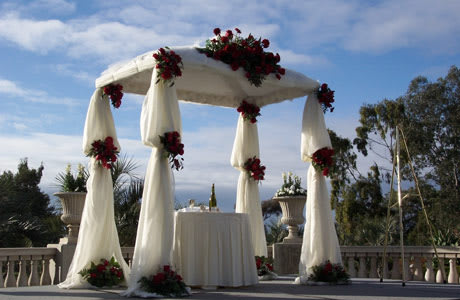The Mishna tells us “Eighteen years of age for the CHUPA” (Avot 5:21). But this is not like “Thirteen years of age for mitzvot”, whereby a Bar Mitzva is automatically celebrated for any 13-year old boy. A person doesn’t routinely get married right after his 18th birthday, rather this is singled out as an age when it was practical and desirable for the average young man to get married in the time of the Mishna.
On the one hand, this acknowledges that some delay of marriage is sometimes called for. After all, a person is technically obligated in the mitzva of propagation at the age of 13. And indeed the Talmud states that it is praiseworthy to get married close to that age when this is practical (Yevamot 62b). The delay is necessary for most young people to obtain the emotional maturity for marriage and the material basis for maintaining a household. And naturally some people will delay marriage even past the age of eighteen. However, the delay has a limit: “Once twenty years have gone by and a person is still single, He says, his bones will rot” (Kidushin 29b). (Again, the exact age varies in different generations.)
This bold statement raises many interesting questions, but the Drisha commentary on the Tur (EHE 1:12) asks an unexpected one: “We need to give a reason why it relates to the bones”, why this part of the body was singled out by the Aggada! In turn, the Drisha refers us to a chain of Aggadic associations with the bones of the body.
First he relates it to the Ran’s commentary at the end of tractate Taanit. The Gemara states: “Anyone who eats meat or drinks wine on the eve of Tish’a b’Av, his sins are engraved on his bones, as it is written (Yechezkel 32:27): And their sins will be upon their bones” (Taanit 30b). The Ran explains that bones were chosen because of their connection to wine. This in turn is learned from the Gemara in Nida (24b): “One who drinks concentrated wine, his bones are burnt; overly diluted, his bones are soaked; properly diluted, his bones are well-oiled.”
The Drisha continues: “For the principal strength a person derives from wine goes to his bones. Likewise, someone who doesn’t want to marry a woman and fears that his virile strength will be spent… and that he won’t have strength in his bones, therefore his bones will rot.
And we may also say because it is written regarding woman ‘This time it is a bone of my bone’, yet he doesn’t want her, and to strengthen his bone, thus the Holy One blessed be He says that his bones will rot, measure for measure.
This takes us on quite an interesting tour: from delayed marriage to neglecting mourning for the Mikdash to drinking wine to virility to the creation of woman!
The bones, that is the frame, is a natural symbol of a person’s independence and strength of character. When someone lacks character we refer to him as lacking “backbone” or “spine”. Wine, which breaks down the barriers between people, is often a symbol of fellowship and society. Mourning is the ultimate experience of solitude, because the departed soul was an integral part of the life of each loved one; thus each experiences the loss privately. The same is true of mourning over the Mikdash, and indeed the final meal must be eaten alone. [Except years like this one, when Tish’a b’Av follows Shabbat – Ed.] When a person drinks wine at this meal, seeking an experience of fellowship and joy, he is unable to strengthen and repair the unique part of his identity which is bound up with the sanctity of the Temple. His sins are engraved upon his bones; his very character is eroded and eaten away. The Ran connects this to the Gemara in Nida; there we learna general principal of the relationship between fellowship and character. Someone who drinks concentrated wine, representing an excess of fellowship, finds his bones are burnt; because of his constant dependence on others his independence and character are spent. But the opposite extreme is also not good; a person whoover- dilutes his wine, who is lukewarm in his relations with others, finds that his bones are soft, for his independence, though complete in its extent, is weak since it is never tested in everyday intercourse. A healthy character is cultivated in a sufficient but not excessive degree of social involvement.
The ultimate social relationship is that of marriage, which is the ultimate mold of character. A person may fear that the constant, unrelieved social contract of marriage will weaken his bones, just as excessive wine (social intercourse) burns them. (This corresponds to the fear that it will spend the man’s virile strength, which is also a symbol of character and independence.) But this is a misunderstanding. Actually the unique social interaction in marriage is quite different than ordinary friendship; the spouse is not an external crutch or support but a part of one’s very self. As the Drisha writes, the spouse is “bone of my bone”. So the marriage relationship does not erode one’s character. On the contrary, someone who puts off marriage too long may find that his character begins to weaken from the lack of support of a loyal partner; thus one who waits too long to get married finds that his “bones rot” his character is not adequately challenged and developed.
Rabbi Asher Meir is the author of the book Meaning in Mitzvot, distributed by Feldheim. The book provides insights into the inner meaning of our daily practices, following the order of the 221 chapters of the Kitzur Shulchan Arukh.
The words of this author reflect his/her own opinions and do not necessarily represent the official position of the Orthodox Union.
